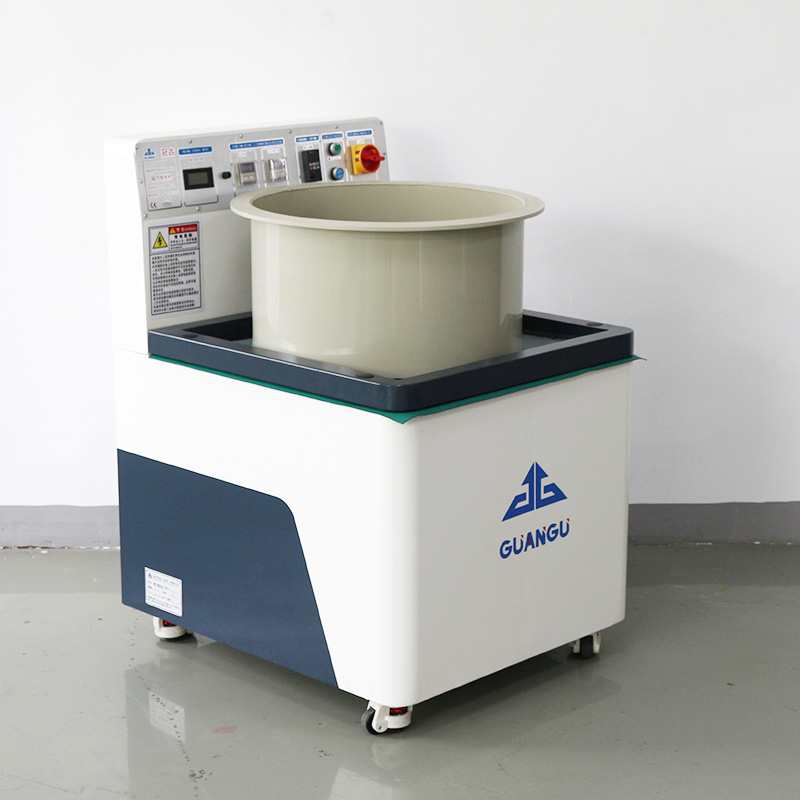Titanium and titanium alloys are widely used in aviation, aerospace, medical and other fields because of their excellent corrosion resistance, high strength, low density and other characteristics. However, titanium machined parts are prone to surface roughness in the manufacturing process, which affects their usability. This paper mainly focuses on the polishing technology of titanium machined parts to discuss, analyze the polishing process considerations and optimization methods.

Titanium machining parts in the manufacturing process, due to the impact of cutting, grinding and other processing methods, the surface will produce a certain degree of roughness. Polishing is a means of removing the roughness of the surface of the machined parts, which can make the surface of the machined parts reach a flat and smooth state. Polished titanium machined parts have the following advantages:
1. improve the surface gloss, increase the aesthetics;
2. Decrease surface roughness, reduce the coefficient of friction;
3. Improve the sealing performance of the processed parts;
4. enhance the fatigue strength and corrosion resistance of the processed parts.
Titanium processing parts polishing process, polishing agent and processing parts surface friction, polishing agent in the abrasive particles on the surface of the processing parts cutting, remove surface roughness. Polishing agent selection, polishing speed, polishing pressure and other factors will affect the polishing effect.
1. Selection of polishing agent: polishing agent is divided into solid polishing agent and liquid polishing agent. Solid polishing agent mainly includes abrasives, such as aluminum oxide, silicon carbide, etc.; liquid polishing agent mainly includes polishing oil and polishing liquid, in which the polishing oil plays a lubricating role, and the polishing liquid contains abrasive particles, which are used to remove surface roughness.
2. Polishing speed: Polishing speed refers to the speed of the polishing head moving on the surface of the processed parts. Polishing speed is too low, will lead to the polishing agent in the surface of the processed parts stay too long, so that the surface scratches; Polishing speed is too high, will lead to poor polishing results. Generally speaking, the polishing speed should be determined according to the nature of the polishing agent and the material of the processed parts.
3. Polishing pressure: polishing pressure refers to the polishing head on the surface of the workpiece pressure. Polishing pressure is too small, can not achieve a good polishing effect; polishing pressure is too large, it will lead to deformation of the surface of the workpiece, or even damage.
1. Processing surface pretreatment: before polishing, the surface of the processed parts should be cleaned to remove oil, oxidized skin and other impurities. For machined parts with large roughness, grinding can be carried out first to reduce the surface roughness.
2. Selection and proportion of polishing agent: according to the material of the workpiece, surface roughness and other conditions, select the appropriate polishing agent. At the same time, the ratio of polishing agent should be appropriate, too much or too little will affect the polishing effect.
3. Control of polishing speed and pressure: In the polishing process, the polishing speed and pressure should be adjusted according to the nature of the polishing agent and the material of the processed parts. At the same time, it is necessary to ensure that the motion trajectory of the polishing head is stable to avoid scratches.
4. Cooling in the polishing process: titanium machined parts in the polishing process, due to friction will produce heat, resulting in increased surface temperature of the machined parts. In order to prevent oxidized skin on the surface of machined parts, appropriate cooling measures should be taken.
5. Post-polishing treatment: after polishing is completed, the machined parts should be cleaned to remove the residual polishing agent. For easy oxidation of titanium machined parts, can be oiled or coated with protective agents and other treatments to prevent surface oxidation.
1. the use of efficient polishing equipment: the choice of high-performance polishing machine, improve polishing efficiency, reduce processing costs.
2. develop new polishing agent: research new polishing agent, improve polishing effect, reduce polishing time. 3. improve polishing process: optimize the polishing process to prevent surface oxidation.
3. Improve the polishing process: optimize the polishing process to improve the polishing quality of the processed parts.
4. Strengthen the parameter control in the polishing process: through precise control of polishing speed, pressure and other parameters, to ensure the consistency of the polishing effect.
5. the introduction of intelligent technology: the use of artificial intelligence, robotics and other technologies to realize the automation and intelligence of the polishing process.
In short, the polishing technology of titanium processing parts is of great significance in practical application. Through the optimization of the polishing process, the surface quality of titanium machined parts can be improved to meet the requirements of its use in different fields. In the future, with the continuous development of science and technology, the polishing technology of titanium processing parts will be more mature, providing strong support for the development of China's titanium industry.